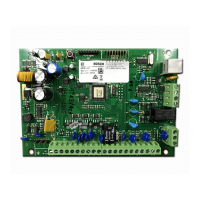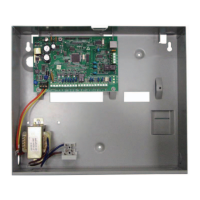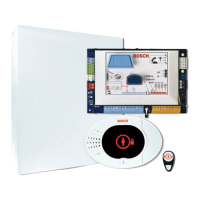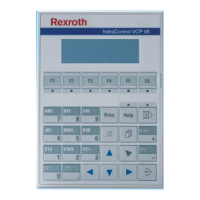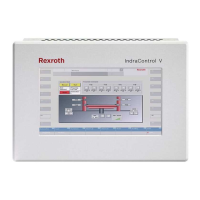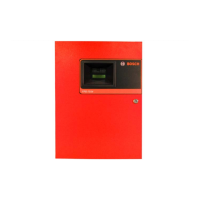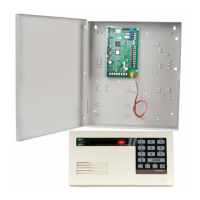ICP-CC408 | Installation Guide | 11.0 Dialer Information EN | 49
Bosch Security Systems, Inc. | 12/08 | F01U089463-02
11.0 Dialer Information
This section outlines the programming information
required for the ICP-CC408 Control Panel when
communicating with a base station receiver. These
parameters specify the telephone numbers to call, the
transmission formats, handshake tones, and
transmission speeds.
The control panel can report event information from
two on-board dialers. The first dialer reports to
Receiver 1 and the second dialer reports to Receiver
2. You can program each dialer with two separate
telephone numbers, handshake tone, reporting
format type, and Subscriber ID Number.
Example
You can set up Dialer 1 to report in Domestic
Dialing Format to Receiver 1 and set up Dialer 2 to
report to a base station receiver in Contact ID
Format only if Dialer 1 is unsuccessful.
To program a telephone number:
You must program a 0 as a 10. Each location in the
primary, secondary, and callback telephone numbers
stores one digit of the telephone number.
You must insert a 0 at the end of a telephone number
to indicate to the dialer that the end of the telephone
number is reached. The dialing sequence is
terminated when a 0 appears.
Example
To program the telephone number 9672 1055 as the
Primary Telephone Number for Receiver 1, program
the following sequence into Locations 000 to 015:
[9 6 7 2 1 10 5 5 0 0 0 0 0 0 0 0]
To enter a 4-sec pause in the dialing sequence,
program a 13. A pause might be necessary when the
dialer communicates through an old (slower)
telephone exchange or when a PABX system is in
place.
Example
To program the number 02 pause 9 672 1055, enter:
[10 2 13 9 6 7 2 1 10 5 5 0 0 0 0 0].
Table 48 shows how to program the numbers, keys,
and functions for a telephone number.
Table 48: Dialing Digits
Digit
Required
Number to
Program
Digit
Required
Number to
Program
terminator 0 8 8
1 1 9 9
2 2 0 10
3 3 * 11
4 4 # 12
5 5 4 sec pause 13
6 6 break 14
7 7
11.1 Primary Telephone Number for
Receiver 1 and Receiver 2
Location
000 to 015 (Receiver 1)
Default
0
Location
040 to 055 (Receiver 2)
Default
0
When the control panel transmits a report, it dials the
Primary Telephone Number to contact the
monitoring station or pager, for example. If the call is
successful, the relevant information is transmitted and
the dialer returns to Standby Mode.
If unsuccessful, the dialer attempts two more calls
using the Primary Telephone Number for Receiver 1.
If these calls are unsuccessful, the dialer calls the
Secondary Telephone Number for Receiver 1 up to
three times. If the dialing sequence is still
unsuccessful, the control panel repeats this sequence
by dialing the Primary and Secondary Telephone
Numbers for Receiver 2 (if they are programmed).
If the first six attempts are unsuccessful and no
telephone numbers for Receiver 2 are programmed,
this procedure is repeated only once, for a maximum
of 12 call attempts per alarm, after 10 min.
If the Primary and Secondary Telephone Numbers
for Receiver 2 are also programmed, the control
panel attempts a maximum of 24 calls per alarm.
Contact your monitoring station or pager company
for the correct telephone numbers before you
program these locations.
When Receiver 1 or 2 is set up for
domestic reporting, telephone numbers
programmed into these locations are
ignored. Refer to Section 6.1.2 Changing
Domestic Phone Numbers on page 29
(using the Installer Code function) or
Section 6.2.4 Changing Domestic Phone
Numbers on page 35 (using the Master
Code Function).
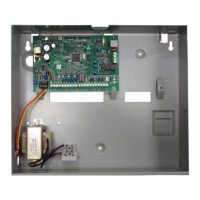
